Abstract
Four older and 4 younger men were given extended exposure to a continuous-recognition memory procedure. Experimental variables included the type of stimulus (alphanumeric strings, words, or sentences), the intervals separating repeated items, gains and losses for correct and incorrect recognitions, and the extent of practice with the memory task. Signal detection analyses indicated that the older men generally were less accurate (sensitivity), particularly when the stimuli were strings, but that age differences decreased with practice. Under conditions in which the payoff matrix was neutral, the older and younger men showed equivalent rates of hits and false alarms (bias). Alteration of the matrix to require more liberal or more conservative patterns of recognition responding led to corresponding changes for men of both ages. Adjustments by the older men, however, were not as close to the bias values called for by the new matrices.
Full text
PDF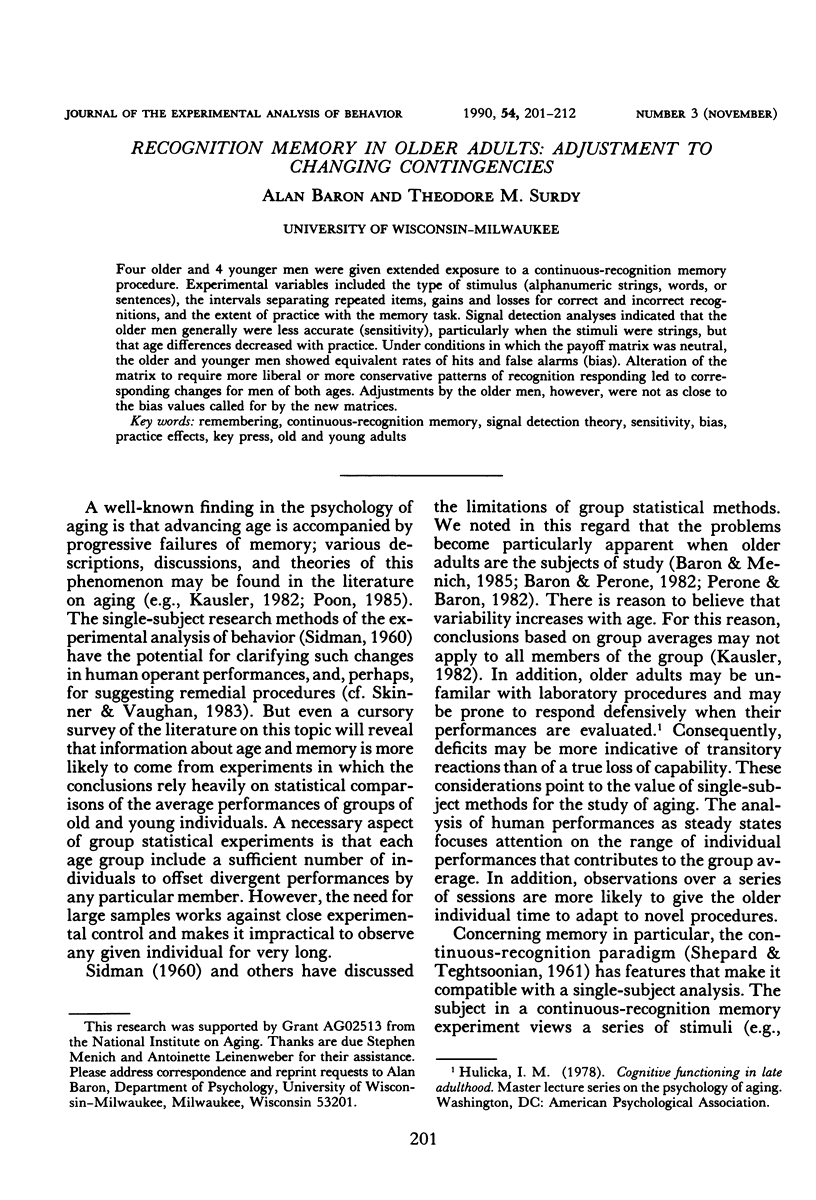
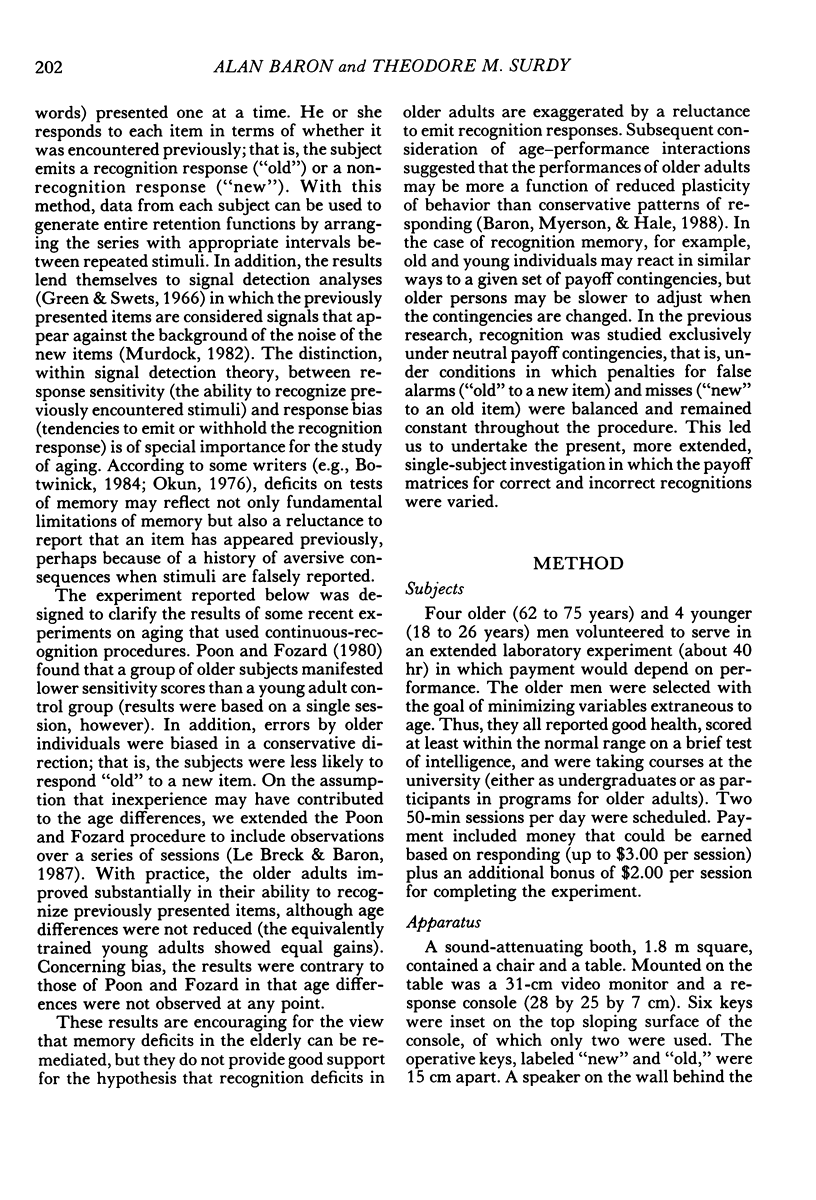
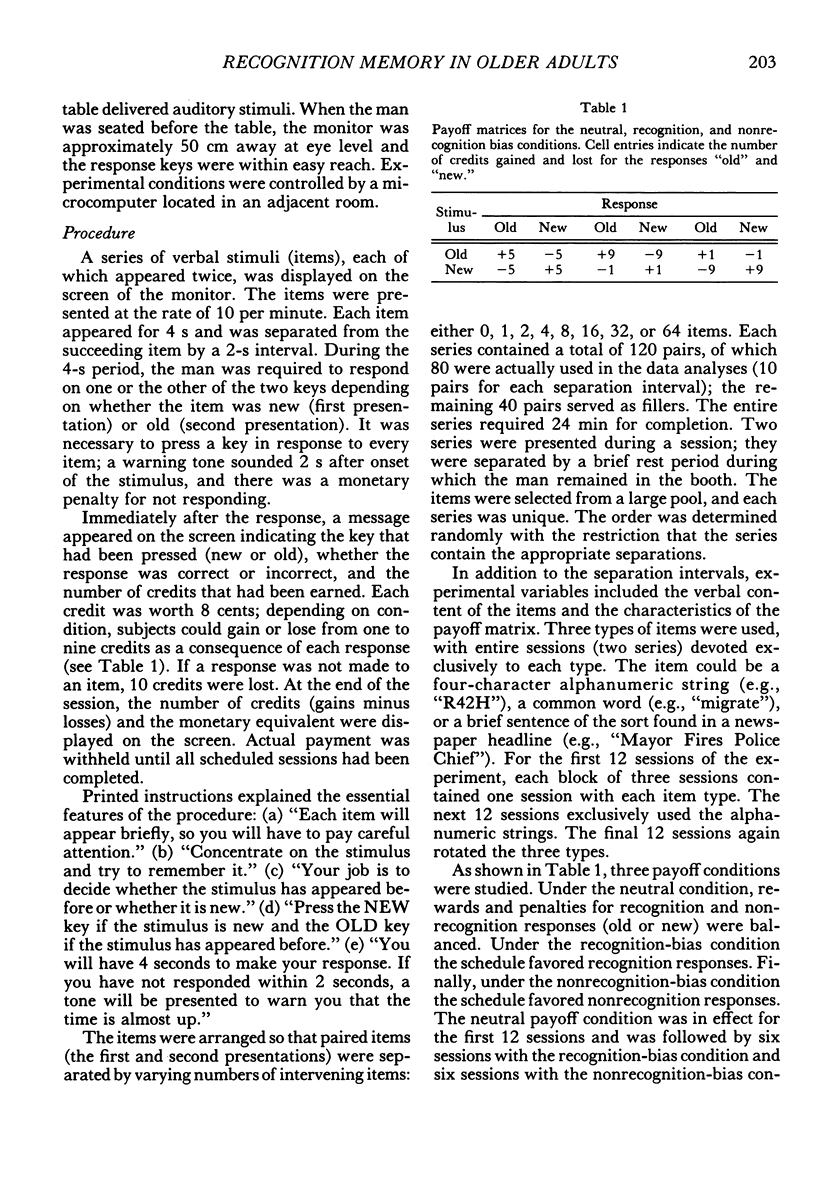
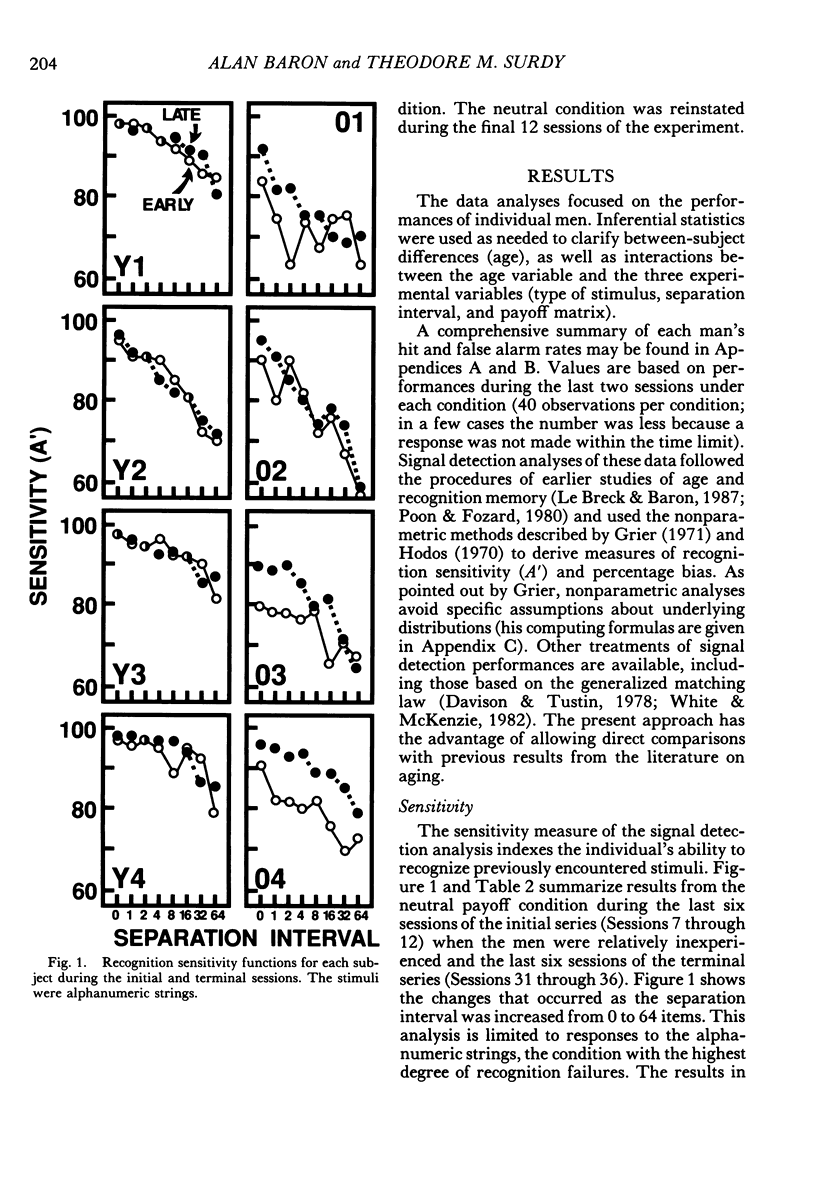
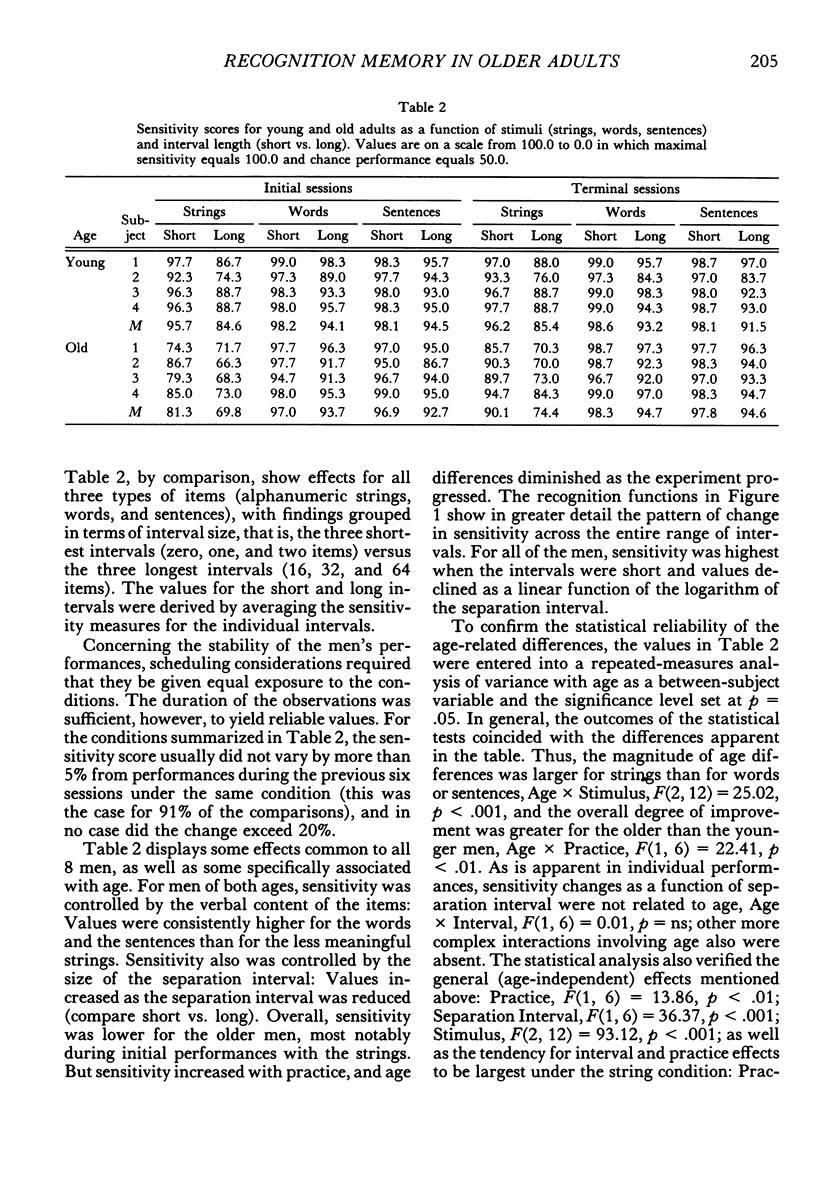
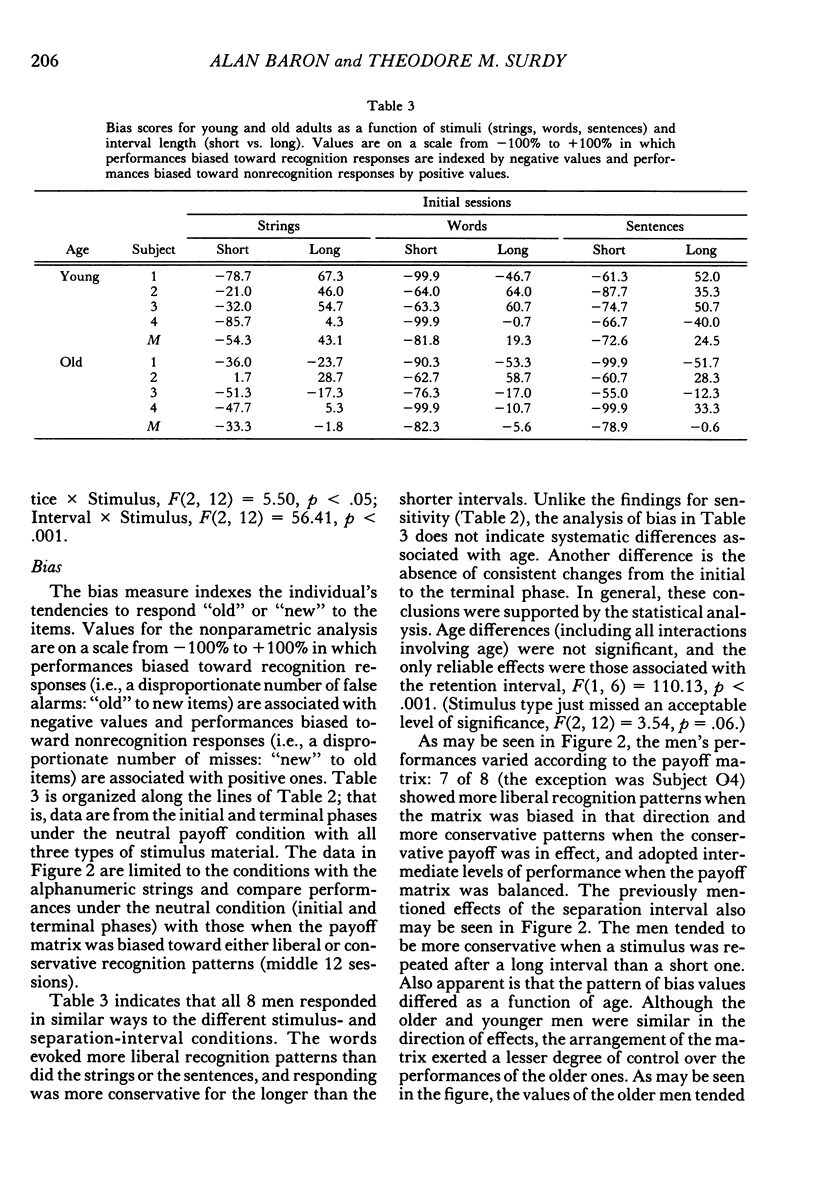
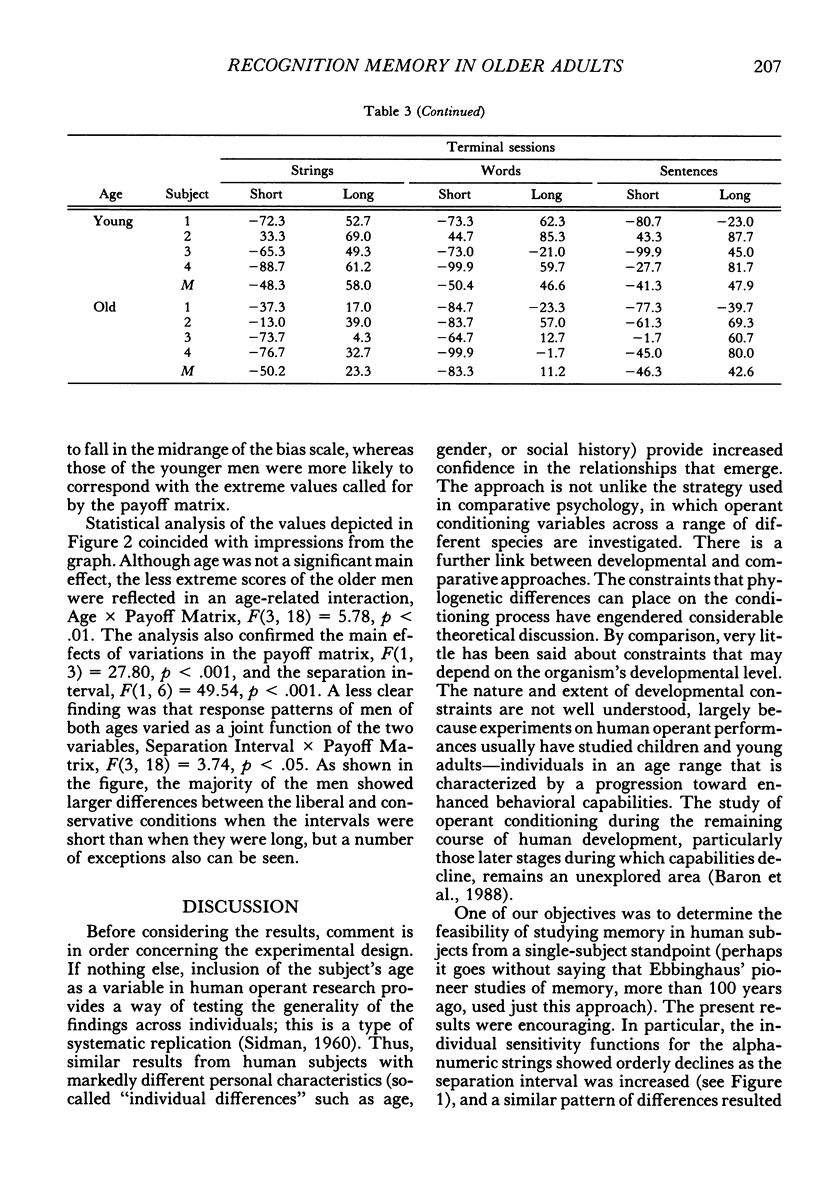
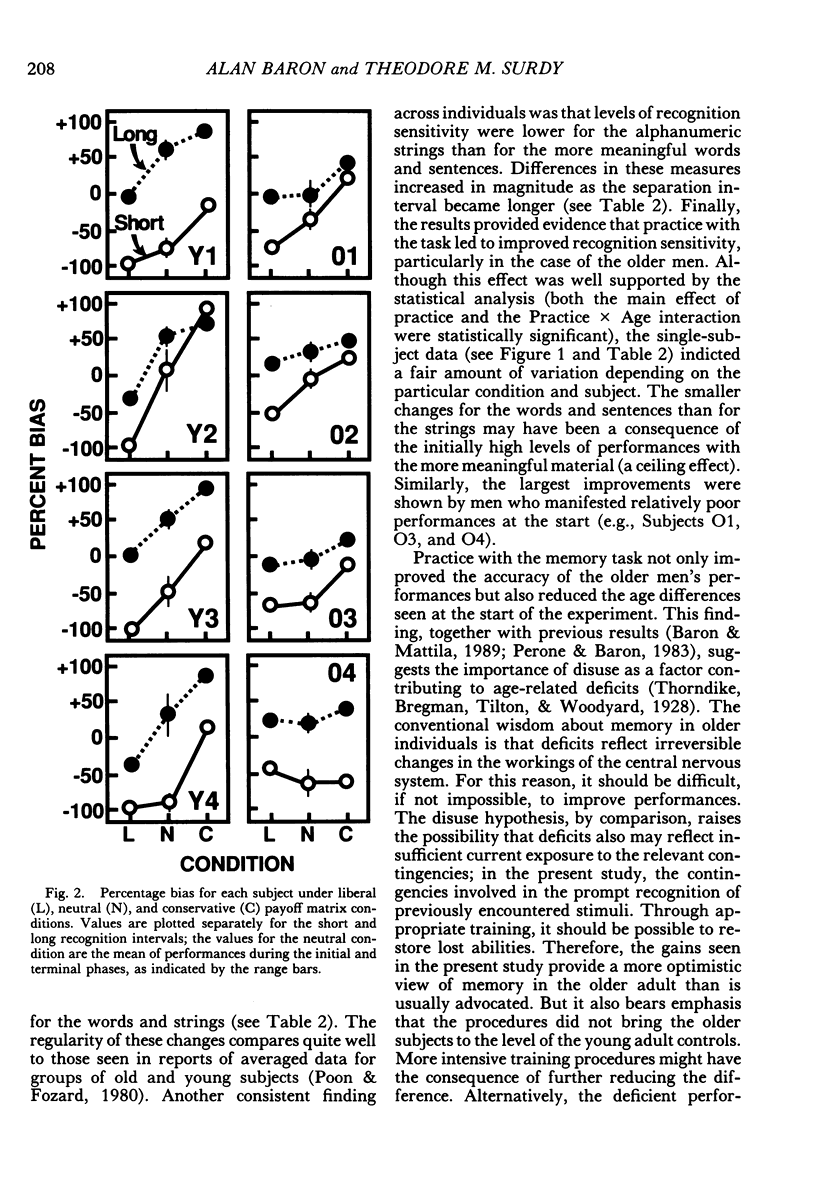
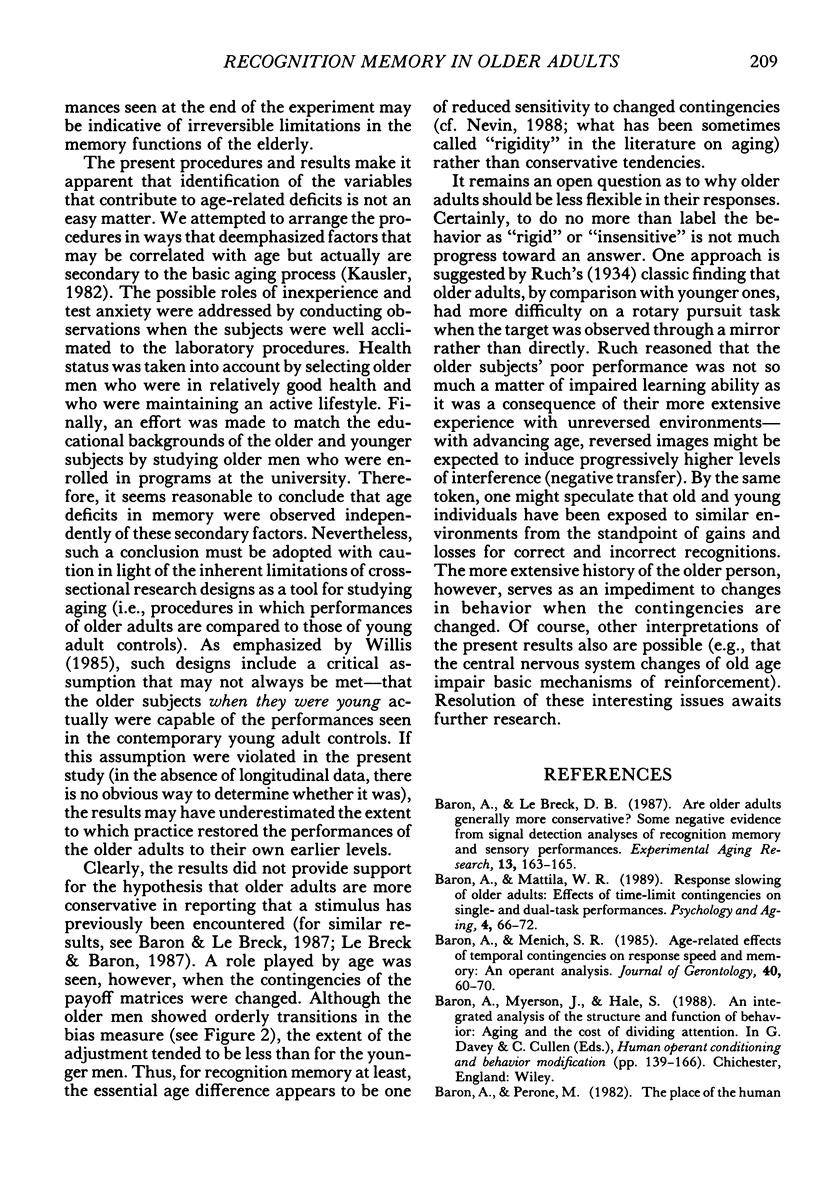
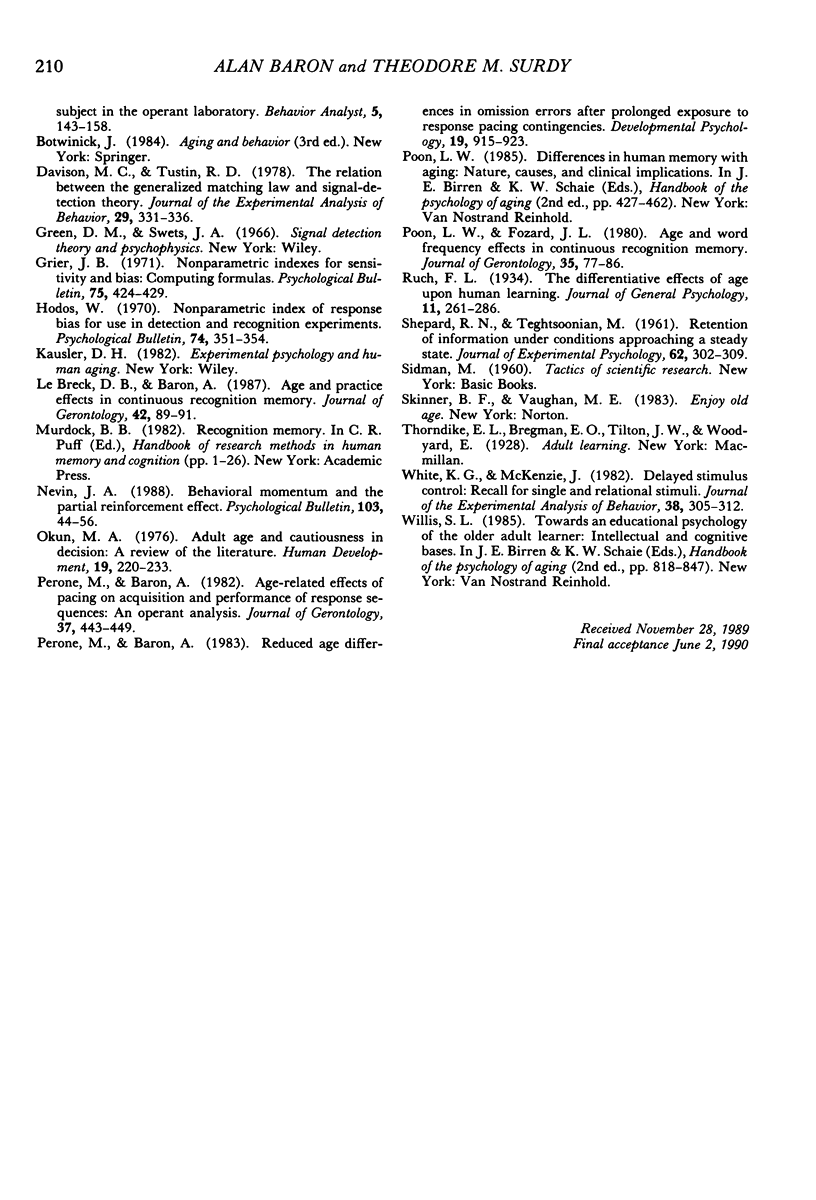
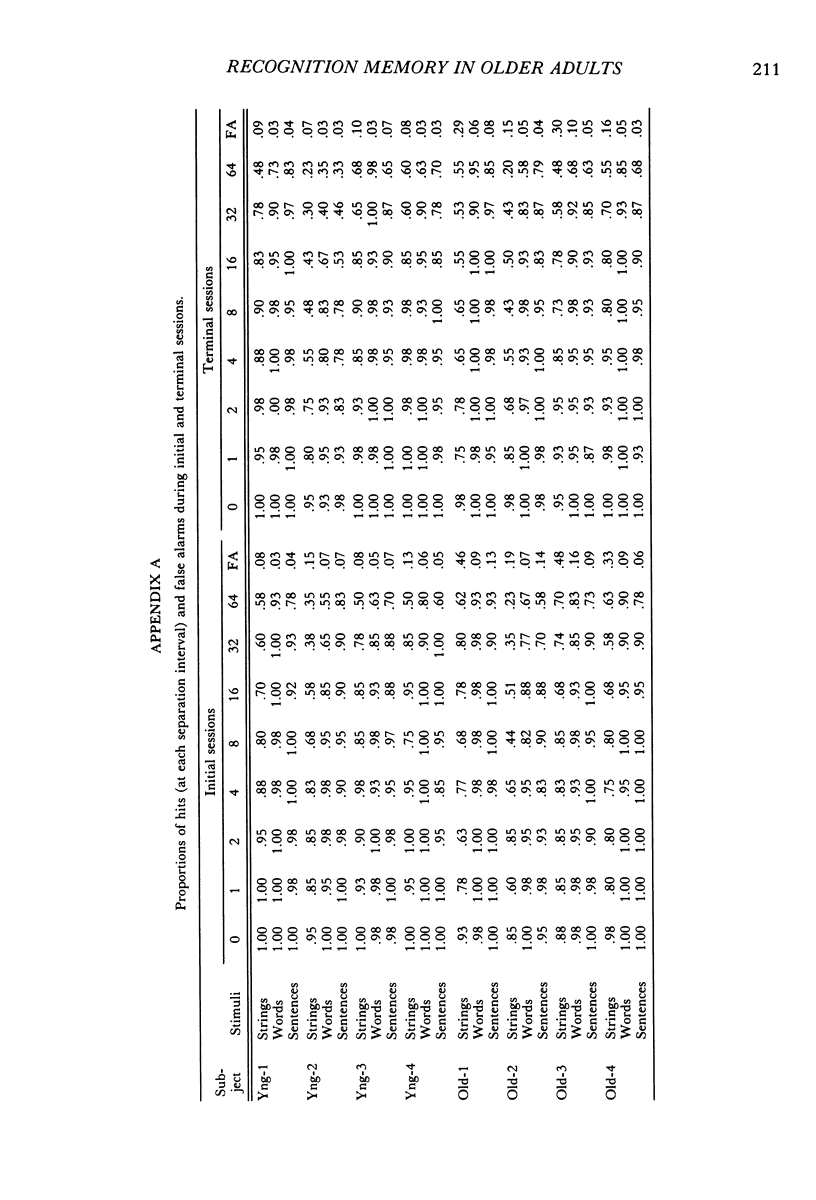
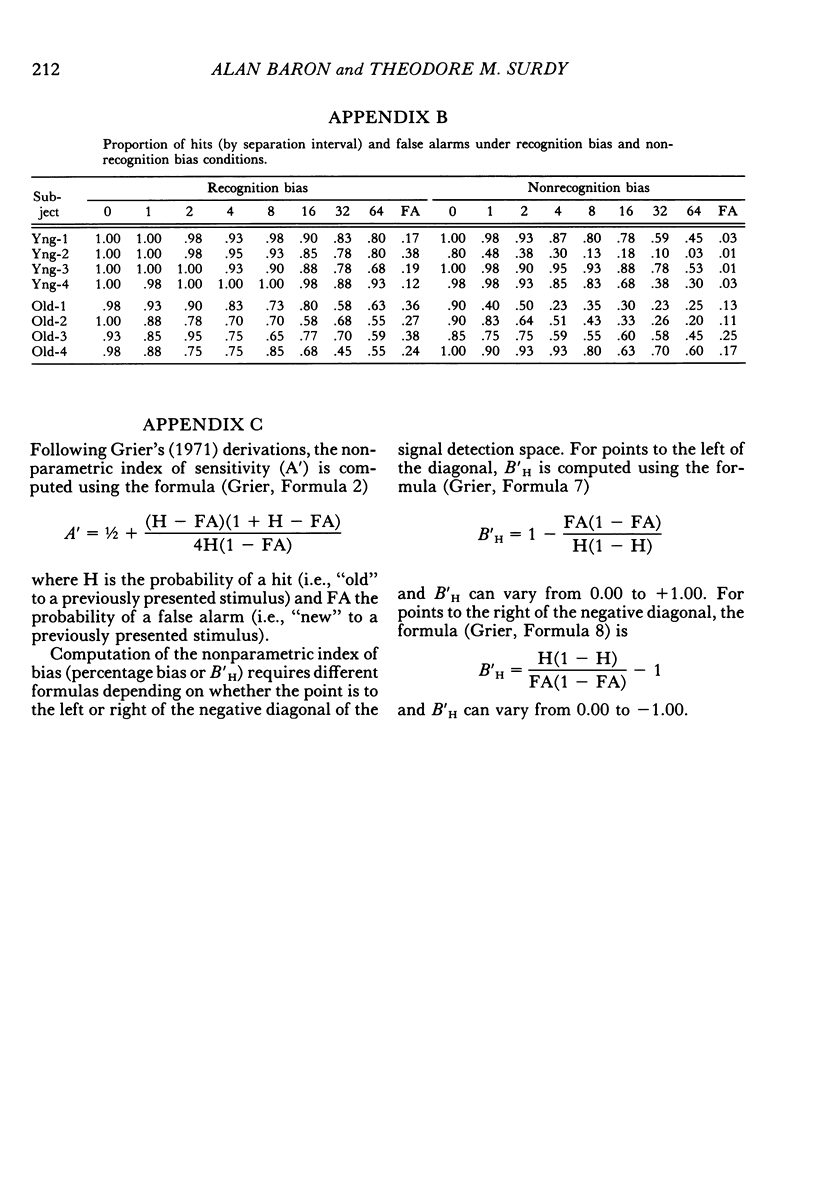
Selected References
These references are in PubMed. This may not be the complete list of references from this article.
- Baron A., Le Breck D. B. Are older adults generally more conservative? Some negative evidence from signal detection analyses of recognition memory and sensory performance. Exp Aging Res. 1987 Autumn;13(3):163–165. doi: 10.1080/03610738708259319. [DOI] [PubMed] [Google Scholar]
- Baron A., Mattila W. R. Response slowing of older adults: effects of time-limit contingencies on single- and dual-task performances. Psychol Aging. 1989 Mar;4(1):66–72. doi: 10.1037//0882-7974.4.1.66. [DOI] [PubMed] [Google Scholar]
- Baron A., Menich S. R. Age-related effects of temporal contingencies on response speed and memory: an operant analysis. J Gerontol. 1985 Jan;40(1):60–70. doi: 10.1093/geronj/40.1.60. [DOI] [PubMed] [Google Scholar]
- Davison M. C., Tustin R. D. The relation between the generalized matching law and signal-detection theory. J Exp Anal Behav. 1978 Mar;29(2):331–336. doi: 10.1901/jeab.1978.29-331. [DOI] [PMC free article] [PubMed] [Google Scholar]
- Grier J. B. Nonparametric indexes for sensitivity and bias: computing formulas. Psychol Bull. 1971 Jun;75(6):424–429. doi: 10.1037/h0031246. [DOI] [PubMed] [Google Scholar]
- Le Breck D. B., Baron A. Age and practice effects in continuous recognition memory. J Gerontol. 1987 Jan;42(1):89–91. doi: 10.1093/geronj/42.1.89. [DOI] [PubMed] [Google Scholar]
- Okun M. A. Adult age and cautiousness in decision: a review of the literature. Hum Dev. 1976;19(4):220–233. doi: 10.1159/000271530. [DOI] [PubMed] [Google Scholar]
- Perone M., Baron A. Age-related effects of pacing on acquisition and performance of response sequences: an operant analysis. J Gerontol. 1982 Jul;37(4):443–449. doi: 10.1093/geronj/37.4.443. [DOI] [PubMed] [Google Scholar]
- Poon L. W., Fozard J. L. Age and word frequency effects in continuous recognition memory. J Gerontol. 1980 Jan;35(1):77–86. doi: 10.1093/geronj/35.1.77. [DOI] [PubMed] [Google Scholar]
- SHEPARD R. N., TEGHTSOONIAN M. Retention of information under conditions approaching a steady state. J Exp Psychol. 1961 Sep;62:302–309. doi: 10.1037/h0048606. [DOI] [PubMed] [Google Scholar]
- White K. G., McKenzie J. Delayed stimulus control: recall for single and relational stimuli. J Exp Anal Behav. 1982 Nov;38(3):305–312. doi: 10.1901/jeab.1982.38-305. [DOI] [PMC free article] [PubMed] [Google Scholar]


